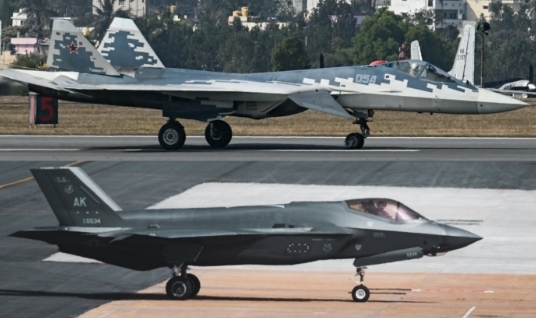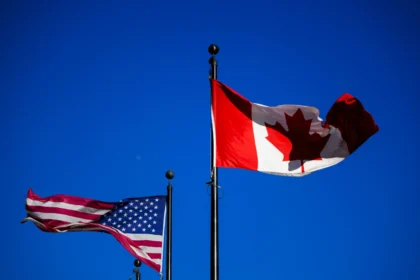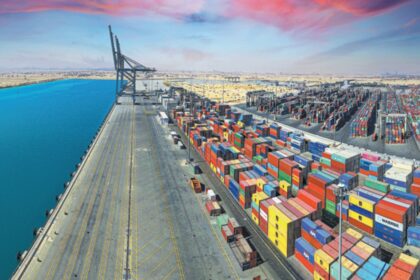The recent rise of right-wing nationalist strongmen (and in the case of Italy and potentially Germany, strongwomen) globally has created a clique of world leaders who hold a soft corner for each other. These like-minded politicians share many of the same talking points at home, and there is a general trend of their regimes being friendly with one another.
Strengthening Ties Between India and the US
Two such regimes displayed their closeness when Indian Prime Minister Narendra Modi visited Washington, D.C., at the invitation of U.S. President Donald Trump. The two have long had a bromance of sorts, with PM Modi being invited to the U.S. in 2019 with much fanfare and according the same courtesy to President Trump on his subsequent visit to India during the President’s first term—events playfully named Howdy Modi and Namaste Trump. This recent visit was different, though. There were no rallies, no parades, just cold, hard business.

During the Trump-Modi meeting, trade issues were tackled with a pledge to increase bilateral trade volume. The Indian PM agreed to work to improve the balance of trade between the two countries by purchasing U.S. oil and gas, along with offering concessions on import taxes to American companies. President Trump has threatened multiple nations, including India, with tariffs on what he calls “unfair trade practices” with the U.S.
President Trump, on his part, seemed to hint at the United States and India working on a large-scale infrastructure project similar to China’s Belt and Road Initiative (BRI). India has long opposed the BRI, especially Pakistan’s extensive role in the project and its construction in Kashmir and Gilgit-Baltistan. President Trump sees China as America’s arch-rival on the global stage.
The Shock Announcement: India to Buy F-35s
The most significant news, however, came in the form of an announcement by President Trump of increased U.S.-India defense cooperation. India has traditionally relied on Russia as the main source of arms for its fighting services, with Russian weapons comprising the lion’s share of its stockpiles. Recent acquisitions of French fighter aircraft and Israeli drones have signaled India’s willingness to work with Western suppliers. India even bought helicopters and maritime patrol aircraft from the U.S., but India’s insistence on indigenization and the lackluster performance of American platforms in service with the Indian Navy has meant that U.S.-India defense cooperation has been limited.
So when President Trump announced that India would be buying F-35 Lightning fighters, it sent shockwaves across Washington, Delhi, Islamabad, and beyond.
India’s Fighter Strength Crisis
The Indian Air Force (IAF) has a serious problem when it comes to fighter strength, with reports from January of this year stating that the IAF only has enough aircraft to operate 31 of its 42 squadrons. The IAF initially planned to address this with the large-scale introduction of the Tejas fighter produced by Hindustan Aeronautics Limited (HAL), but a recent statement by the Chief of Air Staff seems to indicate that the force has lost confidence in HAL and is looking for alternatives. This comes after the Tejas project ballooned in cost and repeatedly overran deadlines—one of the many issues plaguing the Tejas project was a delay in the delivery of engines from American contractor General Electric.
The Strategic Need for the F-35
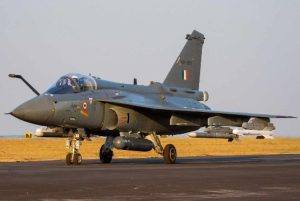
The IAF’s two major adversaries, the Pakistan Air Force (PAF) and China’s PLAAF, have been working on their capabilities. The PLAAF is fielding fifth-generation J-20 “stealth” fighters, while the PAF is looking to follow suit soon with the J-35. The PAF has also seen great success with its JF-17 Thunder project, a direct rival to India’s Tejas. The JF-17 is in widespread service across the PAF and in limited service with the air forces of Myanmar, Nigeria, and Azerbaijan.
Faced with enemies possessing a technological advantage and at full strength, the F-35 might just be India’s trump card. However, the aircraft is eye-wateringly expensive, with each unit expected to cost India upwards of US$100 million—compared to the US$40 million estimate most cited for the HAL Tejas. Additionally, armaments, support systems, and training will drive the cost even higher. This has caused the Indian opposition to raise questions, with the controversy surrounding the acquisition of French Rafale jets still fresh in their minds. The Russians are also understandably unhappy, having pitched their own top-of-the-line Su-57 Flanker to India just one week prior at the Aero India exhibition in Bengaluru.
Controversies Surrounding the F-35 Program
The F-35 program is not without its flaws. It has faced significant cost and time overruns, with President Trump’s Government Efficiency Czar Elon Musk calling it a “flop” and “the worst military value for money in history.” The aircraft’s high costs and long production backlog also mean that the IAF is unlikely to get the quick fix it so desperately needs.
In addition to voices within Indian military and political circles speaking out against the deal, the Republic of Turkey has called out the United States for its hypocrisy in offering the F-35 to India. Turkey, a NATO member state, was one of the original customers of the F-35, even contributing heavily to the aircraft’s development. However, the United States blocked the transfer of these fighters to Turkey when the Turks purchased Russian S-400 air defense systems—which India also operates—citing concerns regarding the protection of military secrets and proprietary data from U.S. contractors.
A Costly Yet Strategic Move
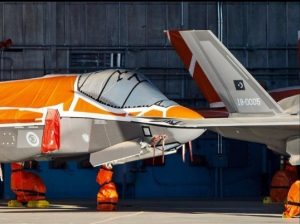
All in all, India’s acquisition of the F-35 is likely both a goodwill gesture towards the Trump administration and a continuation of the evergreen arms race between India and Pakistan. While it might help improve the capabilities of the IAF, this will come at an extremely high cost, and the sidelining of other—perhaps more suitable—initiatives could prove disadvantageous to India in any all-out encounter.






